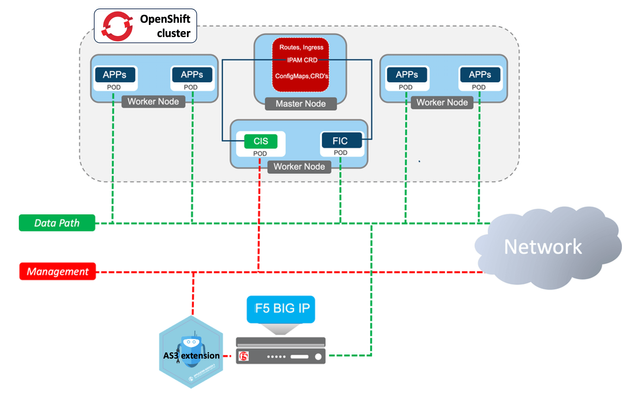F5 BIG-IP deployment with OpenShift - platform and networking options

 Employee
Employee Nimbostratus
NimbostratusThanks for the article,
I have a question about multi-cluster architecture:
Would you recommend an approach where each OpenShift cluster has its own CIS instance, and each CIS connects to a separate BIG-IP tenant (rather than using partitions within a single tenant)?
In other words, is it viable (or better) to use one CIS + one tenant per cluster instead of splitting clusters via partitions in the same tenant?
I’d appreciate your thoughts on the pros/cons of each method
- Ulises_AlonsoNov 14, 2025
Employee
I like having different CIS instances for the different tenants. Note that each tenant which can represent a set of namespaces, and write in different partitions in the BIG-IP. How to define the scope of a tenant is something that should be adapted to each enterprise, it could be by department, functional unit, end-customer service...
This is specially useful in medium to large environments.
Overall this separation is good because it limits the scope of any possible problem and it is easier to check logs.Each of these CIS instances could work in multi-cluster mode for the same tenant in different clusters for OpenShift cluster resiliency.
Did I answer your question?- thanhpntNov 17, 2025
Nimbostratus
Hi,
Thank you for your answer. I understand now that having separate CIS instances per tenant (and per OpenShift cluster) is generally better for isolation.
I will proceed to implement multiple F5 tenants for my multi-cluster OpenShift deployment and explore running CIS instances per tenant for resiliency
Help guide the future of your DevCentral Community!
What tools do you use to collaborate? (1min - anonymous)